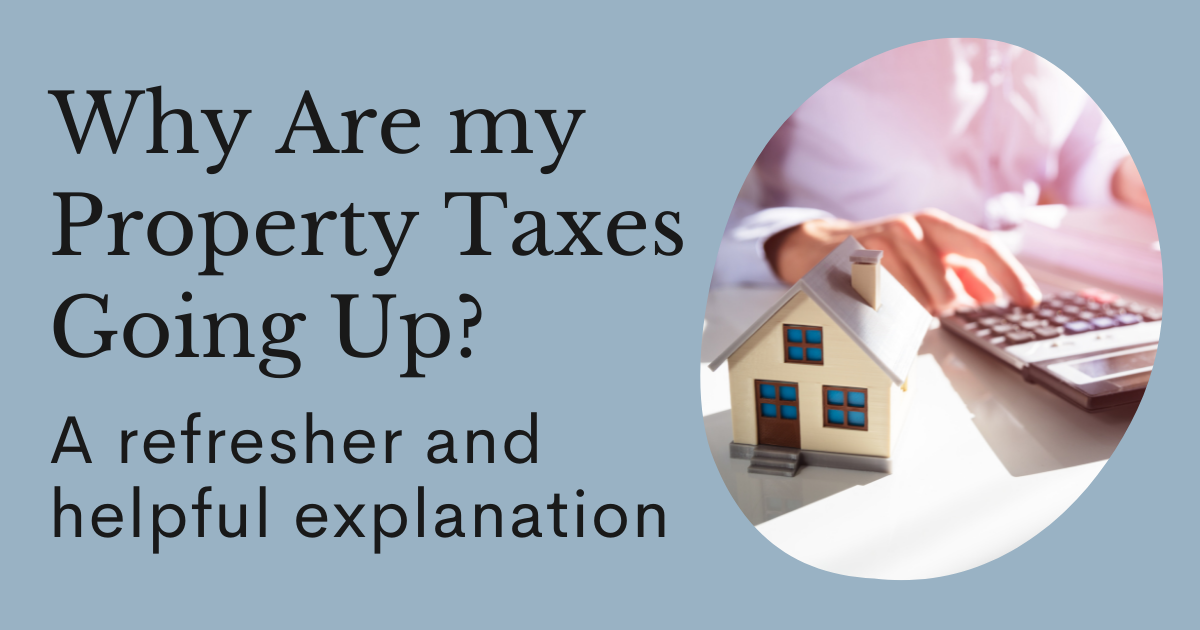Every spring and fall we are reminded of the fact that we are renting our land from our local governments. Oh, the joys of homeownership. Before we get into why your property taxes are going up, let me explain why property taxes exist and how they work.
What is the purpose of property taxes?
Property taxes are a primary source of funding for local government units, including counties, cities and towns, townships, libraries, and other special districts including fire districts and solid waste districts. These funds are used to pay for a variety of services including welfare; police and fire; new construction and maintenance of buildings; local infrastructure like highways, roads, and streets; and the operations, including salaries, of the local units of government.
Property taxes are derived from local government spending divided proportionally according to the value of the taxpayer’s property. Per a 2018 study, the statewide average revenue distribution per $1 of property tax is as follows:
- County: $0.19
- Township: $0.03
- City/Town: $0.24
- School: $0.43
- Library: $0.04
- Special Unit: $0.07
How are local tax rates calculated?
Property taxes represent a property owner’s portion of the local government’s budgeted spending for the current year. Local spending is the reason for property tax rate increases – or decreases – depending on local fiscal management. This is why local elections matter, another topic for another day.
How is the value of my property determined?
Indiana properties are valued using mass appraisal techniques. With mass appraisal, your property is looked at in conjunction with other properties in your area. Assessors consider age, grade, and condition. Finally, in a process known as annual adjustment, each year real property sales data is used to determine if the value of properties in your area should change to match the market value found in the sales of recent properties.
How is my tax bill calculated?
Property taxes are simple to calculate – take the assessed value of your property after deductions and multiply it by your local tax rate and that is your gross tax liability. However, there are many other steps that can make this calculation more complicated.
Summary
As you can see, there are several factors that go into the property tax calculation but to simplify your tax bill, if property values and/or local government spending has increased in your area, that could mean you may be seeing an increase in your local property taxes in the near future. With the recent boom in housing prices and fiscal stimulus, many homeowners may be getting an unpleasant surprise with their next property tax bill.
We live in Wells County and our property taxes increased by 17% from 2020 to 2021. However, I cannot complain as our district tax rate was 1.7341% in 2021, which is the 1,445th highest district out of 2,070 districts in the state. If you live in Indiana, you can check this website out to see where your district ranks.

